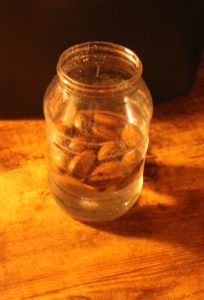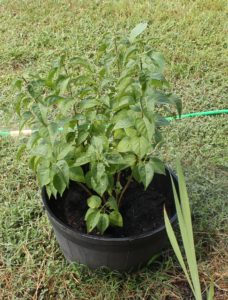Today I made one of my many trips to the Dover Produce Junction and found an unusual fruit for sale. The fruit is a tropical plant known as Rambutan. Rambutan trees are native to the Indonesian region of the world. It is now distributed worldwide, thanks to the 13th century traders. The plant is an evergreen tree which grows to approximately 65 feet high as a mature tree, under the proper conditions. There are three types of Rambutan trees, the male which produces flowers but no fruit, the female which produces flowers only and the hermaphroditic which produces female flowers and a small percentage of male flowers.
The fruit itself is round to oval and contains a single seed. The fruit skin is reddish color and covered with fleshy hairs or spines. The flesh is either translucent or white and possess a sweet, slightly acidic flavor very similar to that of grapes. The single seed within the fruit are of a glossy brown color. The seeds can be cooked and eaten, if desired.
The fruit has a very limited self-life and the seed must be removed immediately. The plant is very sensitive to temperatures below 50 degrees, so if you grow one it would need to be kept as a house plant. Now that the introductions and preliminaries are taken care of, let us actually see how to grow these fruits from store bought produce.
As mention above, you must ensure that the fruit you purchase is of high quality and fresh. It cannot be several weeks old or you are prone to failure from the very beginning. After successfully obtaining some fresh fruit, carefully remove the seed found in the center of the fruit. Wash this seed to remove all the pulp from it. If the pulp is not completely removed it will hinder germination.
Plant the seed horizontally with the flat side facing down in a pot with good drainage holes. Fill the pot with a good sand and compost mix. This procedure will assist the plant on growing straight upwards and aid in developing a good root system. I used the same type of mix which I use for growing cactus. Cover the seed slightly with some soil, but don’t plant the seed too deep. Germination will take from one to four weeks. If a fresh seed has not dried out, it may be able to survive for a short period of time in moist sphagnum moss. It will usually take about two years before the tree is ready to be transplanted. At this point the tree should be approximately one foot tall, however, it will still be very fragile.
An alternative method which has seen some manner of success in germinating the seed is to maintain the seed in water making certain to provide fresh water daily. The water used in the germinating process will become somewhat icky so be sure to change it daily. It should germinate in water within a week or so.
When transplant time arrives, it should be placed into a ceramic pot rather than a plastic one or directly into the ground. Use a combination of part sand, part vermiculite, and part peat in the transplant pot. At 6 months of age, the tree should be fertilized and again at one year old. After that fertilize yearly. Keep the soil damp and grow the tree in partial sun.
Now you are knowledgeable in growing the rambutan trees, so why not start some of your own?




